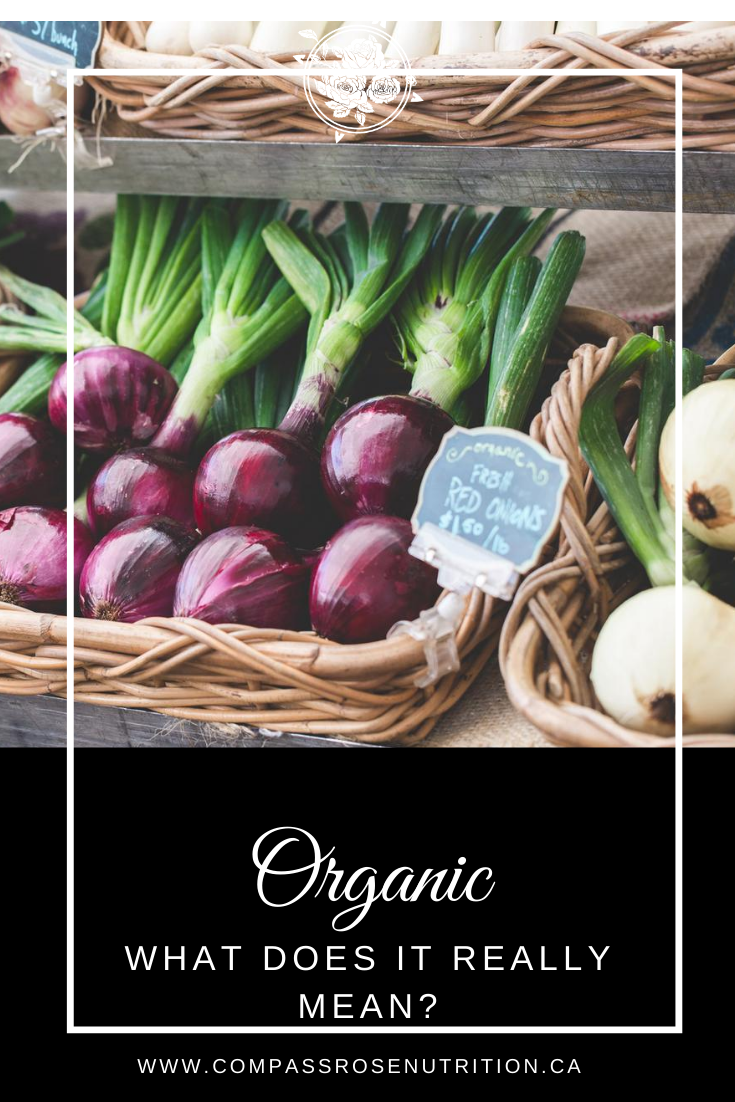Organic…a word everyone seems to be using but with it comes great responsibility and so much confusion!
So, let’s start with a basic definition…
Organic produce (and other ingredients) are grown without the use of:
• Pesticides
• Synthetic fertilizers
• Sewage sludge
• Ionizing radiation
• Genetically modified organisms (GMO’s) and/or using bio-engineering technology
Also, animals that produce meat, poultry, eggs, and dairy products do not take antibiotics or growth hormones.
When it comes to cleaning products for your home or body and cosmetics labelled as ‘organic’, this applies to the product itself, as well as how the ingredients were grown, produced and/or processed to produce these goods.
Organic food and food products with ‘organic’ on the label
The demand for organic food, specifically produce, has skyrocketed over the past two decades, with the growing concern over our exposure to pesticides driving the buying and consumption of organic foods.
Research and several experts have confirmed the idea that if you want to diminish your exposure to chemical residues (such as pesticides), the best way to do that is to choose more organic products in your health routine.
Foods to consider buying organic over conventional counterparts
According to the Environmental Working Group’s Dirty Dozen List, updated for 2019 - you should consider buying the following organic produce:
1. Strawberries
2. Spinach
3. Kale
4. Nectarines
5. Apples
6. Grapes
7. Peaches
8. Cherries
9. Pears
10. Tomatoes
11. Celery
12. Potatoes
The goal of the Dirty Dozen list, which is updated annually, is to let consumers know which fruits and vegetables have the highest amount of pesticide residues.
How can I be assured that what I’m buying is actually organic?
In the United States, the USDA has identified 3 categories of labeling organic products:
• 100% Organic: Made with 100% organic ingredients
• Organic: Made with at least 95% organic ingredients
• Made With Organic Ingredients: Made with a minimum of 70% organic ingredients with strict restrictions on the remaining 30% including no GMOs (genetically modified organisms).
Products with less than 70% organic ingredients may list organically produced ingredients on the side panel of the package, but may not make any organic claims on the front of the package.
In the United States, a product is considered legally organic when the product:
• bears the USDA Organic Seal
• has been certified organic, and
• contains 95% or more organic ingredients.
In Canada, foods and food products are regulated by the Canadian Food Inspection Agency (CFIA), and under the Safe Food for Canadians Regulations, products must be certified organic according to the Canadian Organic Standards and carry the ‘Canada Organic’ logo.
However, a food product must also be free of artificial food additives, including artificial sweeteners, preservatives, colouring, flavouring (and that includes MSG) to be labelled ‘organic’.
Try not to be confused with, and influenced by the term ‘natural’, commonly being used by marketers, with the food or product also being ‘organic’. In reality, the term ‘natural’ can be used on any product label without third party verification, unlike the ‘organic’ label.
Personal Care & Beauty Products with ‘Organic’ on the label
Certified Organic personal care and beauty products must adhere to the following standards:
• NO animal testing
• NO GMO’s
• NO controversial chemicals
• NO parabens and phthalates
• NO synthetic colours, dyes or fragrances
• NO nano particles
Whether to use natural and/or organic personal care products is up to your preferences and personal values.
But whenever you’re introducing new products into your routine or for your family, you should always do your research. Look up the ingredients, figure out if they are natural or organic - if that’s important to you!
Now, you can get started working with me for free! Sign up and get access to my Nutrition Resource Library.
Here are a few of my favorite things inside:
Crock Pot Recipes
Guilt Free Desserts
3 Day Plant Based Reset
Food, Mood and Health Journal
and more!
Related Reading:
10 Superfoods You Should Be Eating
5 Reasons to Shop At Your Local Farmer's Market
6 Easy Tips to Adding Healthy, Whole Foods to Your Day
References:
Organic.org
What Does “Organic” Really Mean?
Organic 101: What Does Organic Mean?
The Dirty Dozen Foods: 12 Foods That Are High In Pesticides
Learn How to Tell When “Organic” on the Label is True
How To Shop For Real Organic Food & Products
Regulating Organic Products in Canada
What Is Organic Food, and Is It Better Than Non-organic?
Healthy Cosmetics
Do Organic Body Care Products Need to Be Certified?



